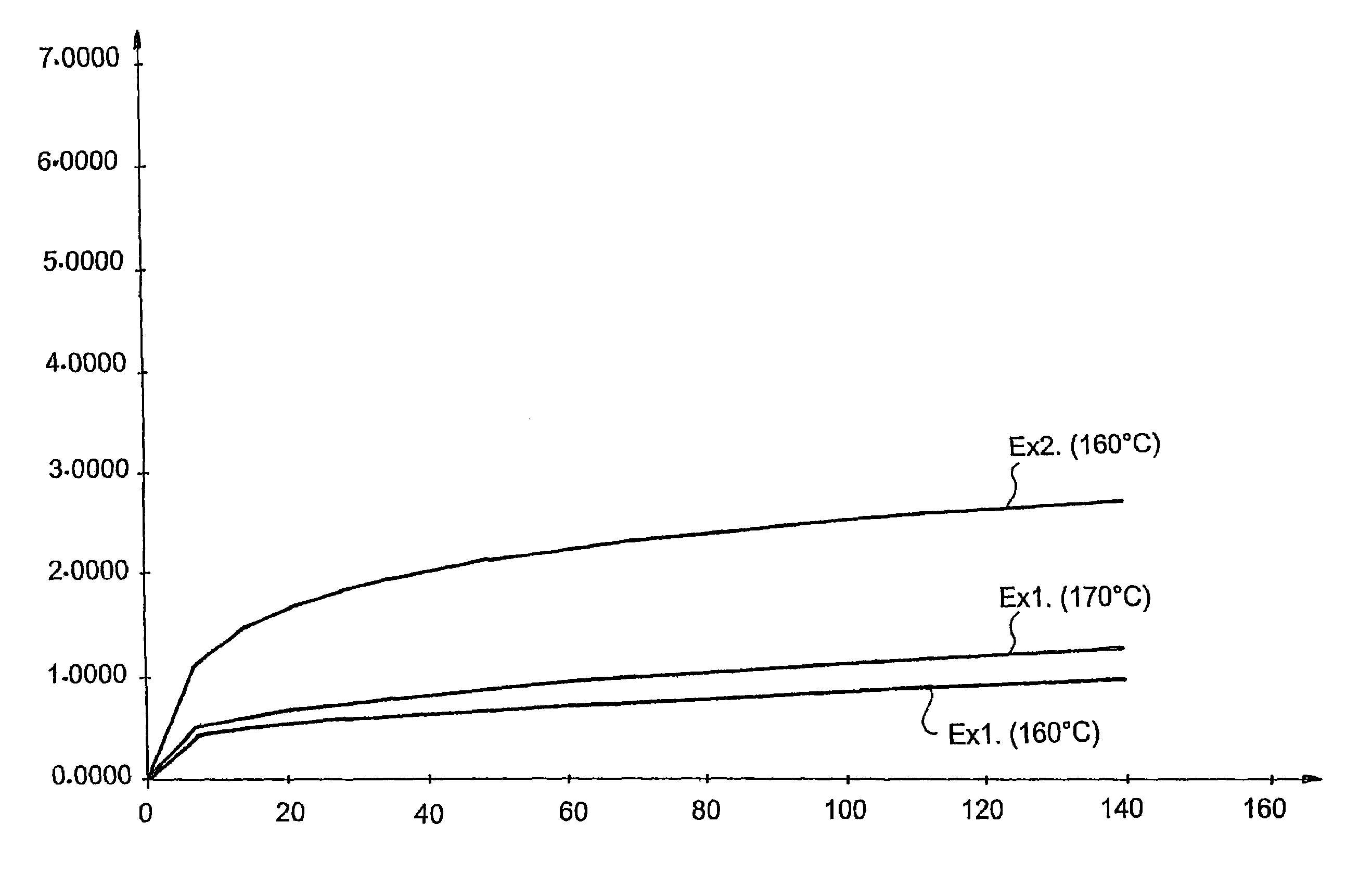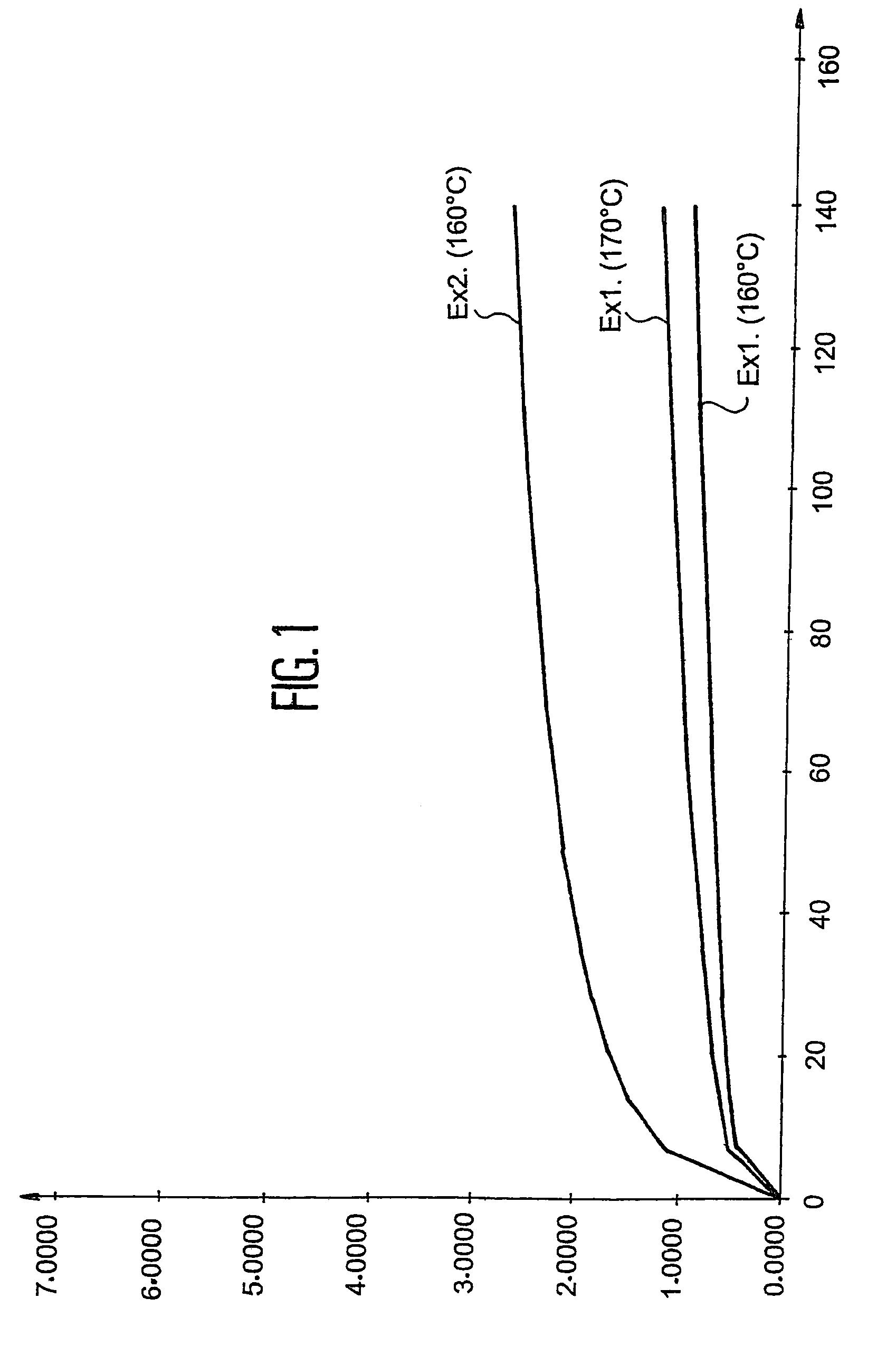Material based on vinylester resin for neutron shielding and maintenance of sub-criticality
a technology of vinylester resin and neutron shielding, which is applied in the direction of electric discharge lamps, instruments, electrical discharge lamps, etc., can solve the problems of inability to keep a nuclear fuel transport packaging sub-critical, unsaturated polyester resin, and mediocre thermal aging resistan
- Summary
- Abstract
- Description
- Claims
- Application Information
AI Technical Summary
Benefits of technology
Problems solved by technology
Method used
Image
Examples
example 1
[0073]A polymerisable mix is prepared from Derakane Momentum 470-300 vinylester resin, styrene, zinc borate Zn2O14,5H7B6 and magnesium hydroxide using the proportions given in table 1 in the appendix.
[0074]The following constituents are added to the mix:[0075]1% by weight, relative to the mass of resin+styrene, of the 55028 accelerator marketed by Akzo, and[0076]2% by weight relative to the mass of resin+styrene, of the Butanox M50 catalyst (methylethyl cetone peroxide) marketed by Akzo.
[0077]The next step is vacuum degassing of the mix for 3 minutes followed by pouring the mix into a mould composed of a compartment of a nuclear fuel transport or storage packaging.
[0078]The gel time is 22 minutes at 20° C.
[0079]The result is a composite material with the following properties:[0080]density: 1.697[0081]hydrogen content: 4.72% by weight, namely 4.78×1022 atoms / cm3,[0082]boron content: 0.97% by weight, namely 9.17×1020 atoms / cm3.
[0083]The material obtained has satisfactory thermal prope...
example 2
[0095]The same operating method is used as in example 1, using the constituents and proportions given in table 1.
[0096]The mix also includes:[0097]0.9% by weight relative to the mass of resin, of the accelerator NL 49P marketed by Akzo, and[0098]1.5% by weight relative to the mass of resin, of the Butanox M50 catalyst marketed by Akzo.
[0099]Setting takes place at ambient temperature and after 25 minutes, a material with the following characteristics is obtained:[0100]density: 1.79[0101]hydrogen content: 4.80% by weight, namely 5.14×1022 at / cm3,[0102]boron content: 0.89% by weight, namely 8.92×1020 at / cm3.
[0103]The material obtained has satisfactory thermal properties.
[0104]The thermal coefficient of expansion a measured by DSC (METTLER) with a temperature rise of 10° C. / min gives the following for the material:[0105]α: 37×10−6 K−1 between 20 and 130° C., and[0106]α: 109×10−6 K−1 above 130° C.
[0107]The specific heat Cp is measured by differential enthalpic analysis (DSC30, METTLER) w...
example 3
[0116]The same operating method is used as in example 1 to prepare a material for neutron shielding and maintenance of sub-criticality, from the following mix:
[0117]
Derakane Momentum 470-32% by weight300 vinylester resinzinc borate13% by weightboron carbide B4C15% by weightalumina hydrate40% by weight
[0118]The mix also comprises:[0119]0.9% by weight relative to the mass of resin, of the NL49P accelerator, and[0120]1.5% by weight relative to the mass of resin, of the Butanox M50 catalyst.
[0121]Setting takes place at ambient temperature; a material with the following characteristics is obtained after 25 minutes:[0122]density: 1.8[0123]hydrogen content: 4.03% by weight, namely 4.34×1022 at / cm3, and[0124]boron content: 13.68% by weight, namely 1.37×1022 at / cm3.
[0125]Considering its high boron content, the material in example 3 has excellent efficiency in maintaining sub-criticality.
[0126]Thus, the material according to the invention has very attractive properties for neutron shielding a...
PUM
| Property | Measurement | Unit |
|---|---|---|
| temperature | aaaaa | aaaaa |
| temperature | aaaaa | aaaaa |
| viscosity | aaaaa | aaaaa |
Abstract
Description
Claims
Application Information
 Login to View More
Login to View More - R&D
- Intellectual Property
- Life Sciences
- Materials
- Tech Scout
- Unparalleled Data Quality
- Higher Quality Content
- 60% Fewer Hallucinations
Browse by: Latest US Patents, China's latest patents, Technical Efficacy Thesaurus, Application Domain, Technology Topic, Popular Technical Reports.
© 2025 PatSnap. All rights reserved.Legal|Privacy policy|Modern Slavery Act Transparency Statement|Sitemap|About US| Contact US: help@patsnap.com



